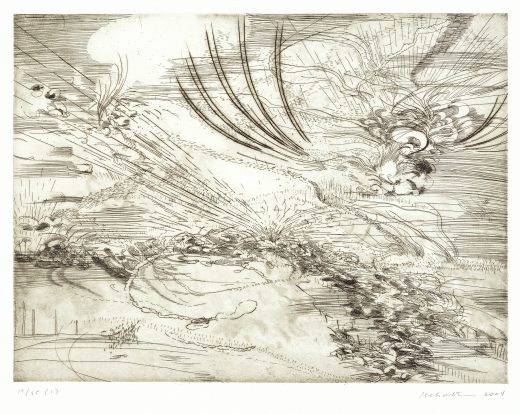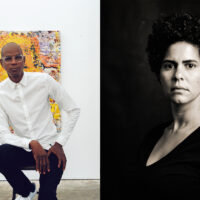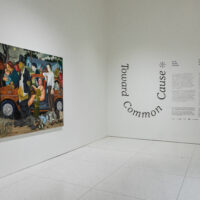Julie Mehretu

“I think the work is about trying to make sense of what is happening outside of that mediated reality. There are more and more of these complicated situations and I think we all exist in them, or at least I know I do, where I come from two different realities and I’m trying to locate myself. That was the point of departure in all the work, trying to make sense of the version of history and reality that my whole family in Ethiopia is living in, and another one that exists here with my parents and my grandmother, and yet another one that I experience.” —Julie Mehretu
Julie Mehretu’s paintings and prints evoke the complexities of a globalized and interconnected world. Her point of view is that of an outsider, zooming far out from a scene or political topic expressed in the dynamic systems of modern urban life. Her images are undergirded by traces of cities, architectural plans, maps, failed utopian plans, allusions to places of unrest such as Tahrir Square, Zuccotti Park (where the Occupy movement started in 2012), and Ferguson, Missouri. Around, over, and through these structures, Mehretu makes marks she describes as “private utopian fighters,” dynamic characters or agents in a complex system, which might refer to people, movements, or revolutionary ideas that swirl around and animate her pictures.
Mehretu’s calligraphic mark-making derives from such disparate sources as Ethiopian manuscripts and Japanese calligraphy, but the majestic scope of her themes speaks to the tradition of European history painting. This toggling between unrelated artistic traditions mirrors her own positions—an Ethiopian in America, an American in Africa, a black woman in a white man’s media, gay in a world designed for straights. Her cultural position—as a diaspora in one person—affords her a unique understanding of the conventions that shape modern life, represented in the charts, graphs, and plans that structure her works. Her insistent hash marks, sometimes densely built up and other times erased or disintegrated, pulse at differing time scales, durations, and rhythms, ultimately speaking of struggles for emancipation as a form of historical inquiry.

